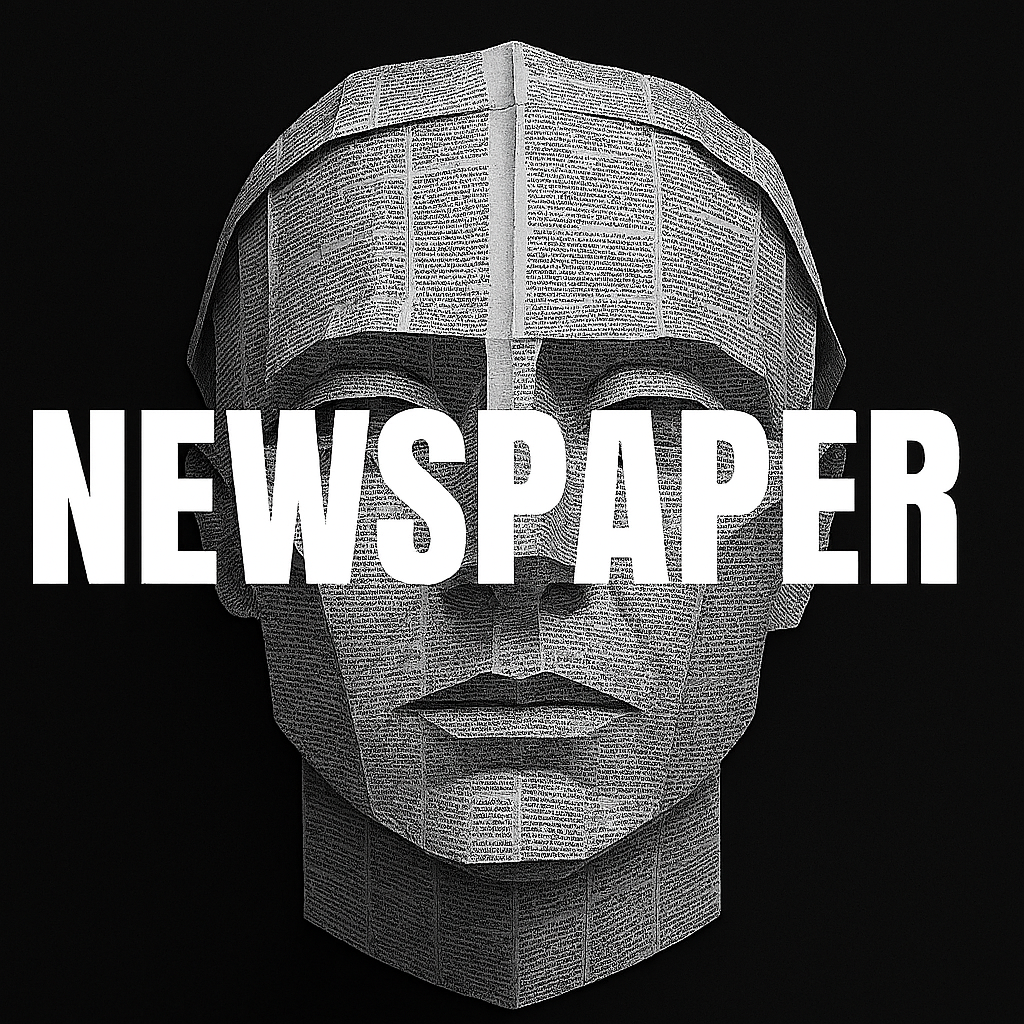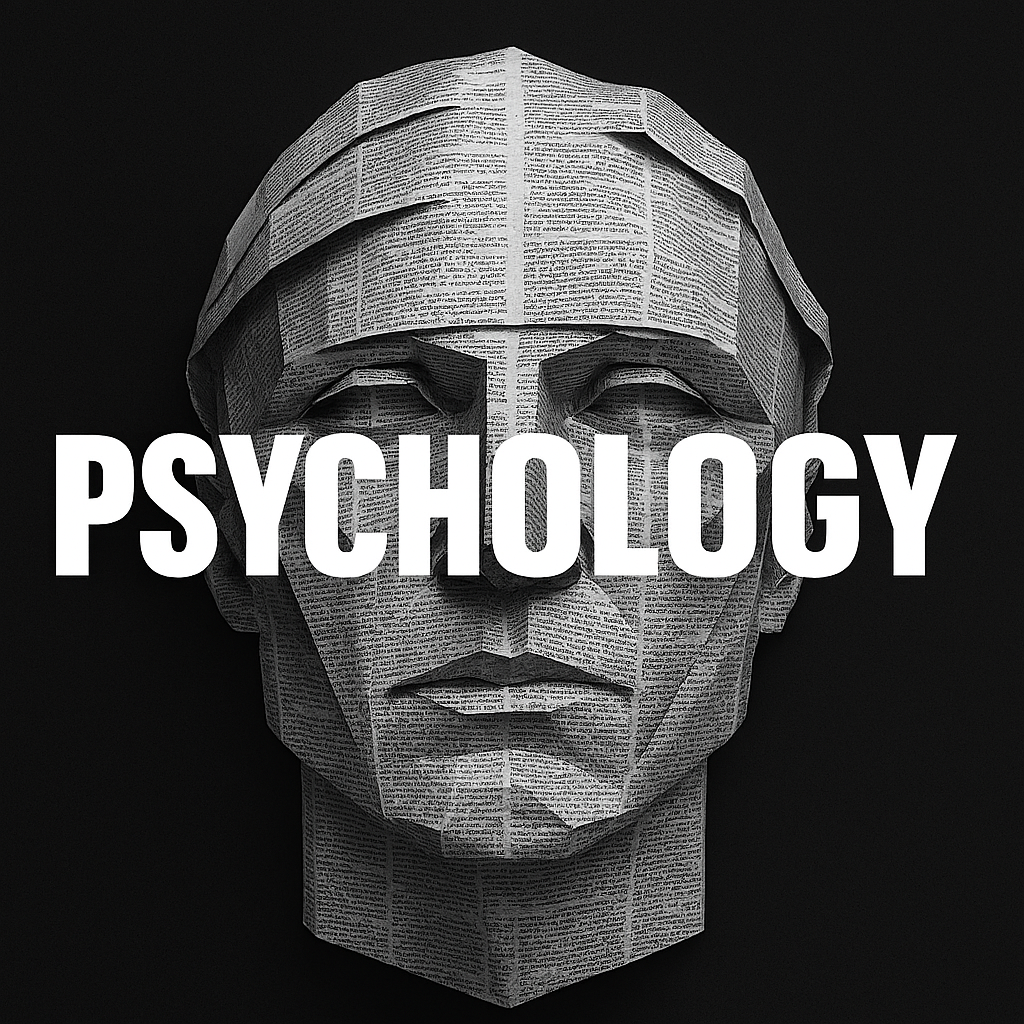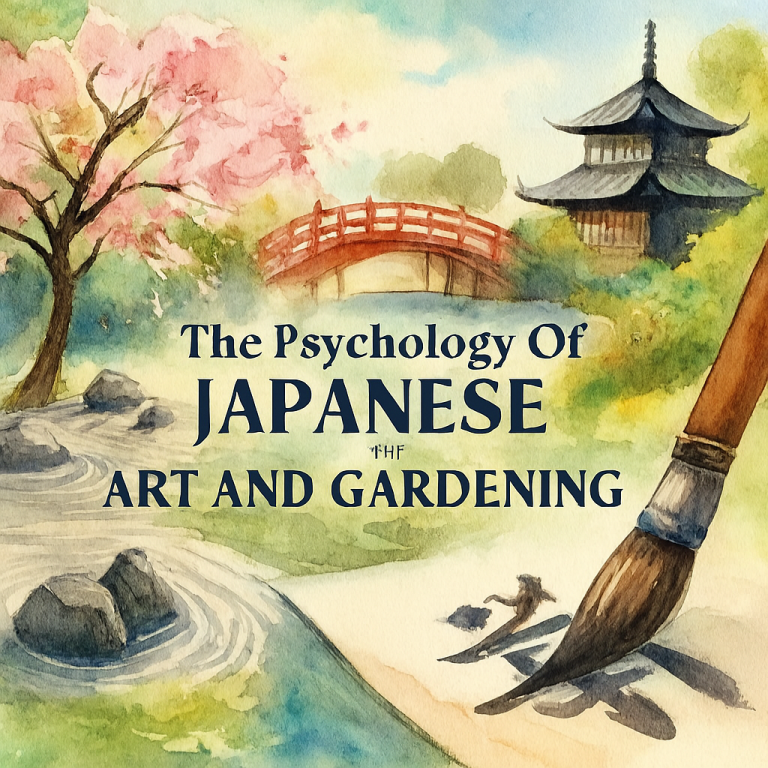
Reading The Newspaper Editorial Powerful Psychology
Reading The Newspaper – From Morning Ritual to Digital Drift
For much of the twentieth century, reading the newspaper was a daily ritual. It marked the beginning of the day and offered a structured way to engage with the world. The physical act of unfolding a broadsheet, scanning headlines, and sipping coffee created a rhythm that was both personal and communal.
This ritual was more than a habit. It was a cognitive framework. The layout of the newspaper guided attention, shaped memory, and helped readers prioritize information. Each section had a purpose, and each page contributed to a sense of narrative order.
In the digital age, that structure has unraveled. News now arrives in fragments—notifications, headlines, and social media posts—often stripped of context. The experience of reading has shifted from immersion to interruption.
This transformation is not just technological. It is psychological. The way we process, remember, and respond to news has changed. Our emotional engagement, attention span, and sense of time have all been reshaped by the medium.

Cognitive Structure – How Newspapers Organized Thought
Print newspapers offered a linear reading experience. Readers moved from the front page to the back, absorbing stories in a deliberate sequence. This mirrored how the brain naturally processes narrative—beginning, middle, and end.
The structure of the newspaper was not accidental. Headlines signaled importance. Columns created rhythm. Sections provided thematic clarity. This design helped readers navigate complex information without feeling overwhelmed.
Digital news disrupts that flow. Online platforms present stories out of order. Algorithms prioritize engagement over coherence. Readers jump between topics without closure or continuity.
This shift affects comprehension. Studies show that linear reading improves memory retention and critical thinking. Fragmented reading, by contrast, encourages skimming and reduces depth of understanding.
The loss of structure also affects how we form opinions. In print, readers encountered a range of perspectives within a single publication. Online, content is often filtered to match existing beliefs.
| Format | Structure Type | Attention Span | Memory Retention | Narrative Flow |
|---|---|---|---|---|
| Linear | Longer | Higher | Coherent | |
| Digital Feed | Fragmented | Shorter | Lower | Disrupted |
The cognitive scaffolding once provided by newspapers has been replaced by a stream of disconnected stimuli. This has consequences for how we think, decide, and remember.
Emotional Engagement – The Feel of Newsprint vs. Screen
Reading a newspaper is a tactile experience. The texture of the paper, the smell of the ink, and the act of turning pages all contribute to emotional engagement. These sensory cues create a sense of intimacy and presence.
Digital news lacks this physicality. Screens are smooth, cold, and interchangeable. The emotional bond between reader and content is weaker. News becomes something to consume, not something to hold.
Print newspapers also offer predictability. The layout is familiar. The tone is consistent. This stability fosters trust and comfort. Readers know what to expect and where to find it.
Online platforms are more chaotic. Fonts change. Ads pop up. Videos autoplay. The experience is fragmented and often overwhelming. This can lead to emotional fatigue and disengagement.
The emotional tone of the content has also shifted. Print journalism traditionally emphasized balance and restraint. Digital news often relies on outrage, urgency, and sensationalism to capture attention.
| Factor | Print Experience | Digital Experience |
|---|---|---|
| Tactile Memory | Strong | Weak |
| Emotional Bond | Deep | Shallow |
| Predictability | High | Low |
| Sensory Cues | Rich | Minimal |
The emotional contract between reader and newspaper has changed. What was once a relationship built on trust and ritual is now shaped by speed, novelty, and distraction.
Social Identity – How Newspapers Shaped Belonging
Historically, newspapers were more than sources of information. They were markers of identity. The choice of publication—whether a national broadsheet, a local daily, or a niche weekly—reflected a reader’s values, class, and cultural alignment. This selection was often visible in public spaces, from cafés to commuter trains, where the masthead signaled affiliation and worldview.
The editorial voice of a newspaper helped shape collective understanding. Readers trusted that the publication’s stance aligned with their own, whether conservative, progressive, or centrist. This trust created a sense of belonging. People discussed headlines with colleagues, debated editorials at dinner tables, and referenced articles in civic discourse. The newspaper was a shared cultural artifact.
In contrast, digital news consumption is largely private and algorithmically curated. Readers no longer choose a single publication. Instead, they receive content tailored to their browsing history, social media behavior, and inferred preferences. This personalization fragments the public sphere. Two individuals may read about the same event but encounter entirely different narratives.
The erosion of shared sources weakens social cohesion. Without common reference points, public debate becomes polarized. Readers are less likely to encounter opposing views, and more likely to reinforce existing biases. The psychological result is tribalism, where identity is shaped by echo chambers rather than broad civic engagement.
| Element | Print Era | Digital Era |
|---|---|---|
| Paper Choice | Identity Marker | Obsolete |
| Shared Headlines | Common Culture | Fragmented Feeds |
| Editorial Voice | Trusted Guide | Algorithmic Noise |
| Reader Community | Cohesive | Dispersed |
Newspapers once fostered a sense of place. Local papers connected readers to their neighborhoods, cities, and regions. They covered school board meetings, community events, and local elections. Digital platforms prioritize global stories and viral content, often at the expense of local relevance. This shift contributes to civic disengagement and a diminished sense of community.
Temporal Awareness – How Newspapers Framed Time
Print newspapers were temporal anchors. They arrived at predictable intervals—morning, evening, weekly—and structured the reader’s engagement with time. The front page captured the day’s most pressing events, while the editorial section reflected on their meaning. This rhythm helped readers situate themselves within a broader historical narrative.
Digital news is continuous and asynchronous. Stories appear at all hours, often without clear timestamps or editorial framing. The result is temporal disorientation. Readers struggle to distinguish between breaking news, ongoing developments, and historical context. This confusion affects memory formation and emotional response.
Chronological reading supports narrative coherence. When events are presented in sequence, the brain can process cause and effect, assess significance, and retain detail. Fragmented reading undermines this process. Readers encounter headlines without background, updates without origin, and reactions without resolution.
The shift also affects accountability. In print, corrections were published in subsequent editions, and archives preserved the evolution of a story. Online, misinformation can spread rapidly and disappear without trace. The lack of editorial continuity weakens the public’s ability to track truth over time.
| Element | Print Experience | Digital Experience |
|---|---|---|
| Time Anchoring | Strong | Weak |
| Daily Rhythm | Structured | Disrupted |
| News Cadence | Predictable | Erratic |
| Memory Formation | Chronological | Fragmented |
Psychologically, time matters. It shapes how we interpret events, form opinions, and respond emotionally. Newspapers once offered a stable framework for temporal awareness. Digital platforms challenge that stability, replacing rhythm with immediacy and sequence with saturation.
Trust and Credibility – The Editorial Contract
In the print era, newspapers operated under a clear editorial contract. Journalists were trained to verify facts, cite sources, and maintain ethical standards. Editors curated content, balanced perspectives, and ensured consistency in tone and quality. This process fostered trust between the publication and its readers. The masthead stood for accountability, and corrections were published visibly when errors occurred.
Digital platforms have disrupted this contract. News is now produced and shared by a wide range of actors, many of whom operate outside traditional editorial frameworks. Social media allows anyone to publish, amplify, and comment on news stories, often without verification. Algorithms prioritize engagement metrics—clicks, shares, reactions—over editorial integrity. As a result, misinformation spreads rapidly, and readers struggle to distinguish credible sources from unreliable ones.
The erosion of trust has psychological consequences. Readers become skeptical, defensive, or disengaged. They may retreat into echo chambers or reject news altogether. This undermines civic participation and weakens democratic discourse. Trust is not just a social value—it is a cognitive anchor. When readers believe in the reliability of information, they process it more deeply and respond more thoughtfully.
Print newspapers also offered transparency. Readers knew who wrote the article, where it was published, and what editorial standards applied. Online, attribution is often unclear. Articles are shared without context, headlines are separated from content, and images are repurposed without explanation. This lack of clarity contributes to confusion and cynicism.
| Element | Print Era | Digital Era |
|---|---|---|
| Editorial Control | Strong | Weak |
| Fact-Checking | Rigorous | Inconsistent |
| Reader Trust | High | Low |
| Source Clarity | Transparent | Obscured |
The psychological contract between reader and news source has shifted. What was once a relationship built on editorial rigor is now shaped by speed, virality, and ambiguity. Rebuilding trust will require new models of verification, transparency, and reader engagement.

Attention and Distraction – The Battle for Focus
Reading a print newspaper demands sustained attention. The layout encourages linear progression, and the absence of hyperlinks or pop-ups allows readers to immerse themselves in the content. This environment supports deep reading, critical thinking, and emotional regulation. Readers can pause, reflect, and return to articles without disruption.
Digital news environments are designed for speed and stimulation. Articles are surrounded by ads, videos, and social media widgets. Notifications interrupt reading, and hyperlinks invite constant diversion. The result is fragmented attention. Readers skim headlines, jump between tabs, and abandon stories midway. This behavior affects comprehension, retention, and emotional engagement.
Attention is a finite cognitive resource. When it is constantly redirected, the brain struggles to process information meaningfully. Studies in media psychology show that multitasking reduces reading comprehension and increases cognitive fatigue. Readers may feel informed, but their understanding is often superficial.
Print newspapers respect attention. They present information in a stable format, with clear boundaries between sections. Digital platforms compete for attention. They use design tricks—bright colors, autoplay videos, infinite scroll—to keep users engaged. This competition creates a paradox: more time spent consuming news, but less time spent understanding it.
| Metric | Print Experience | Digital Experience |
|---|---|---|
| Reading Duration | Longer | Shorter |
| Distraction Level | Low | High |
| Comprehension | Higher | Lower |
| Multitasking | Minimal | Frequent |
The shift from focused reading to distracted scanning has psychological costs. It affects how we learn, how we feel, and how we relate to the world. Restoring attention will require redesigning digital spaces to prioritize depth over volume.
Information Hierarchy – How Newspapers Prioritized Meaning
Print newspapers were designed with a clear hierarchy of importance. The front page carried the most significant stories, often national or international in scope. Headlines were bold and deliberate, guiding the reader’s attention. Inside pages followed a descending order of relevance, with local news, opinion pieces, and lifestyle features arranged in a predictable flow.
This hierarchy helped readers make sense of the world. It offered editorial judgment—a signal that some stories mattered more than others. Readers trusted that the placement of a story reflected its civic weight. The structure also allowed for emotional pacing, balancing hard news with lighter content.
Digital platforms have flattened this hierarchy. Algorithms determine what appears first, often based on engagement rather than importance. A celebrity scandal may outrank a major policy shift simply because it generates more clicks. Readers are exposed to content without editorial framing, making it harder to assess relevance or urgency.
The loss of hierarchy affects cognitive processing. Without cues to prioritize, the brain treats all information as equal. This can lead to confusion, emotional overload, or apathy. Readers may struggle to distinguish between serious issues and trivial distractions.
| Element | Print Experience | Digital Experience |
|---|---|---|
| Story Placement | Editorially Curated | Algorithmically Ranked |
| Importance Signals | Clear | Obscured |
| Emotional Pacing | Balanced | Erratic |
| Relevance Assessment | Guided | Unguided |
Restoring editorial hierarchy in digital formats could help readers navigate complexity and regain a sense of meaning. It would require platforms to prioritize civic relevance over viral appeal.
Language and Tone – The Shift in Editorial Voice
Print journalism traditionally upheld a formal, measured tone. Articles were written with clarity, restraint, and a commitment to neutrality. Even opinion pieces followed stylistic conventions that emphasized argument over emotion. This tone fostered trust and encouraged thoughtful engagement.
Digital news has introduced a more casual, reactive voice. Headlines are often sensationalized to attract clicks. Articles may include slang, rhetorical questions, or emotionally charged language. The shift reflects a broader change in media culture—from information delivery to attention capture.
This transformation affects reader psychology. Language shapes perception. When news is framed in dramatic or confrontational terms, it triggers emotional responses—anger, fear, excitement—that can distort understanding. Readers may react before they reflect, forming opinions based on tone rather than content.
The decline of editorial tone also impacts credibility. Readers accustomed to formal journalism may distrust casual formats. Conversely, younger audiences may prefer conversational styles but struggle to distinguish opinion from fact. The result is a fragmented media landscape with varying standards of expression.
| Element | Print Experience | Digital Experience |
|---|---|---|
| Editorial Tone | Formal | Casual |
| Language Precision | High | Variable |
| Emotional Framing | Minimal | Frequent |
| Reader Response | Reflective | Reactive |
Balancing tone and clarity in digital journalism is essential. It requires a renewed commitment to language as a tool for understanding, not just engagement.
Ethical Framing – Responsibility in News Presentation
Print newspapers operated under established ethical guidelines. Journalists were trained to avoid bias, respect privacy, and report with integrity. Editors enforced standards that protected the public interest. Ethical lapses were rare and often publicly addressed.
Digital platforms lack consistent ethical oversight. Content is produced by a wide range of actors, including influencers, bots, and anonymous users. Stories may be published without verification, context, or accountability. The pressure to publish quickly and attract attention often overrides ethical considerations.
This shift has psychological consequences. Readers are exposed to content that may be misleading, manipulative, or harmful. Without editorial safeguards, they must evaluate credibility on their own—a task that requires media literacy and emotional resilience.
Ethical framing also affects civic behavior. When news is presented responsibly, it encourages informed participation. When it is sensationalized or distorted, it fosters cynicism and disengagement. The ethical tone of journalism shapes not just individual understanding, but collective action.
| Element | Print Experience | Digital Experience |
|---|---|---|
| Ethical Oversight | Strong | Weak |
| Verification Standards | High | Inconsistent |
| Accountability | Visible | Obscured |
| Public Trust | Reinforced | Eroded |
Rebuilding ethical framing in digital news will require collaboration between journalists, platforms, and readers. It is a shared responsibility rooted in transparency and care.
Reader Agency – Choice, Control, and Participation
Print newspapers offered limited but meaningful reader agency. Subscribers chose their publication, selected sections to read, and occasionally wrote letters to the editor. The experience was curated but participatory. Readers felt part of a civic dialogue.
Digital platforms offer expansive but fragmented agency. Readers can choose from thousands of sources, comment instantly, and share content widely. However, this freedom is shaped by algorithms, echo chambers, and platform design. Agency becomes reactive rather than reflective.
The psychological impact is complex. On one hand, readers feel empowered. They can amplify voices, challenge narratives, and engage directly. On the other hand, they may feel overwhelmed by choice, manipulated by algorithms, or isolated in filter bubbles.
Agency also affects responsibility. In print, readers trusted editors to guide them. Online, they must navigate credibility, bias, and overload alone. This shift demands new skills—critical thinking, emotional regulation, and digital literacy.
| Element | Print Experience | Digital Experience |
|---|---|---|
| Reader Choice | Curated | Expansive |
| Participation | Structured | Instant |
| Editorial Mediation | Present | Absent |
| Cognitive Load | Moderate | High |
Empowering readers in the digital age means more than offering choice. It means designing systems that support thoughtful engagement and informed participation.
Cultural Continuity – Newspapers as Civic Memory
Newspapers have long served as cultural archives. They document public life, preserve historical moments, and reflect societal values. Local papers, in particular, capture the texture of communities—the events, debates, and voices that define a place.
Digital news is less anchored in continuity. Stories are published, shared, and forgotten within hours. Archives exist, but they are scattered, inaccessible, or incomplete. The sense of cultural memory is weakened. Readers lose the ability to trace narratives over time.
This affects identity. When communities lack shared records, they struggle to define themselves. Civic memory becomes fragmented. Readers may know what happened yesterday, but not what led to it or what it means.
Print newspapers also fostered intergenerational continuity. Families passed down clippings, discussed headlines, and built traditions around reading. Digital platforms are more individualistic. News consumption is private, personalized, and transient.
| Element | Print Experience | Digital Experience |
|---|---|---|
| Historical Record | Stable | Ephemeral |
| Community Coverage | Rich | Sparse |
| Intergenerational Link | Strong | Weak |
| Cultural Identity | Anchored | Fragmented |
Preserving cultural continuity in digital journalism will require intentional archiving, local investment, and editorial care. It is a task of memory, meaning, and belonging.
Visual Cognition – Layout, Typography, and Design
Print newspapers are visually coherent. They use consistent fonts, structured columns, and predictable layouts. This design supports visual cognition. Readers know where to look, how to navigate, and what to expect. The visual rhythm of the page enhances comprehension and reduces cognitive load.
Digital news platforms vary widely in design. Fonts change across articles. Layouts shift between devices. Ads and pop-ups disrupt flow. The visual experience is often cluttered and inconsistent. This variability challenges the brain’s ability to process information efficiently.
Visual cognition is closely tied to memory. When design is stable, readers can form mental maps of content. When design is erratic, those maps break down. Readers may struggle to recall where they saw a story or how it was framed. This affects not only memory but also emotional response.
Print newspapers also use imagery strategically. Photographs are placed with care, captions provide context, and illustrations support narrative. Online, images are often used for clickbait. They may be unrelated to the story, poorly cropped, or misleading. This undermines trust and confuses interpretation.
| Element | Print Layout | Digital Layout |
|---|---|---|
| Typography | Consistent | Variable |
| Layout Flow | Structured | Disrupted |
| Ad Intrusion | Minimal | Frequent |
| Visual Fatigue | Low | High |
The visual coherence of print supports psychological clarity. The visual chaos of digital platforms contributes to fatigue, confusion, and disengagement. Designing for cognition—not just clicks—will be essential for the future of news.

Memory and Meaning – How News Shapes What We Remember
Newspapers have long played a central role in shaping collective memory. Their structure, tone, and editorial choices helped readers retain not just facts, but meaning. The physical permanence of the printed page allowed stories to linger. Readers could return to articles, clip them for reference, or archive entire editions. This tangibility reinforced memory through repetition and reflection.
Digital news, by contrast, is ephemeral. Stories appear and vanish within hours. Algorithms prioritize novelty, pushing older content out of view. Readers rarely revisit articles, and the absence of physical cues makes retention more difficult. The result is a decline in narrative continuity. Events are remembered in fragments, stripped of context and emotional depth.
Psychologically, memory thrives on structure. When information is presented in a coherent sequence, the brain can encode it more effectively. Print newspapers support this process through layout, typography, and editorial rhythm. Digital platforms often disrupt it. The constant influx of updates, alerts, and competing headlines overwhelms cognitive capacity.
Meaning is also shaped by editorial framing. In print, journalists contextualize events, explain significance, and offer analysis. Online, stories are often reduced to headlines or bullet points. The deeper layers of meaning—historical background, ethical nuance, civic relevance—are lost in the rush for clicks.
| Element | Print Experience | Digital Experience |
|---|---|---|
| Memory Retention | Strong | Weak |
| Narrative Continuity | High | Low |
| Editorial Framing | Rich | Minimal |
| Revisitability | Frequent | Rare |
The shift from permanence to impermanence affects how societies remember. Newspapers once served as archives of public life. Digital platforms offer immediacy but little continuity. Reclaiming memory will require new tools for reflection, context, and long-term engagement.
Behavioral Rituals – The Psychology of News Habits
Reading the newspaper was once a ritualized behavior. It occurred at specific times—morning, lunch break, evening—and involved predictable actions. People unfolded pages, scanned headlines, and moved through sections in a familiar order. This routine provided psychological stability, anchoring the day and reinforcing a sense of control.
Rituals are powerful. They reduce anxiety, enhance focus, and create emotional resonance. The newspaper ritual was not just about information—it was about rhythm, place, and identity. Whether read at the kitchen table or on a train, the act was embedded in daily life.
Digital news consumption lacks this ritual structure. It is sporadic, impulsive, and often reactive. Readers check headlines between tasks, scroll through feeds while distracted, and consume news in fragmented bursts. This behavior undermines the psychological benefits of ritual. Instead of grounding the reader, it contributes to cognitive overload and emotional fatigue.
The absence of ritual also affects how news is processed. In print, readers engage with stories deliberately. Online, they skim and swipe. The lack of physical interaction reduces engagement and retention. The brain responds differently to tactile, intentional behavior than to passive scrolling.
| Element | Print Experience | Digital Experience |
|---|---|---|
| Ritual Structure | Strong | Weak |
| Reading Environment | Stable | Variable |
| Engagement Level | High | Low |
| Emotional Rhythm | Predictable | Erratic |
Reintroducing ritual into digital news consumption may help restore focus and emotional clarity. Scheduled reading times, curated newsletters, and distraction-free formats could offer a bridge between the depth of print and the convenience of digital.
Sports – The Psychology of Competition and Community
The sports section of a newspaper has long served as a psychological outlet for readers. It offers a break from political tension and economic anxiety, replacing abstract concerns with tangible outcomes. Scores, match reports, and athlete profiles provide closure, rhythm, and emotional release. For many, sports coverage is not just entertainment—it’s identity.
Print sports pages were often ritualized. Readers turned to them first, especially on weekends. The layout was predictable: match summaries, league tables, commentary. This structure mirrored the cadence of the games themselves. It allowed fans to relive moments, debate decisions, and anticipate future fixtures.
Digital sports coverage is faster but less grounded. Live updates, highlight reels, and algorithmic feeds dominate. While immediacy enhances engagement, it also fragments memory. Readers consume results without context, and commentary is often reduced to reactive soundbites.
Psychologically, sports coverage fosters tribalism and belonging. Readers align with teams, share victories, and mourn losses. In print, this allegiance was reinforced through consistent editorial tone and regional focus. Online, it is amplified through comment threads and social media—but often without editorial moderation.
| Element | Print Experience | Digital Experience |
|---|---|---|
| Emotional Closure | Strong | Fleeting |
| Narrative Structure | Coherent | Fragmented |
| Fan Identity | Anchored | Amplified |
| Editorial Tone | Balanced | Reactive |
The sports section remains a vital psychological space. Its evolution reflects broader shifts in how we process competition, community, and emotion.
Comics – Humor, Escapism, and Emotional Regulation
Newspaper comics have historically served as a form of emotional regulation. They offer levity, satire, and symbolic storytelling in a compact format. Whether political cartoons or serialized strips, comics provide readers with a moment of relief—a psychological breather amid heavier content.
Print comics were spatially consistent. Readers knew where to find them, often on the back page or in a dedicated strip. This predictability created ritual. The characters—whether whimsical, cynical, or heroic—became familiar companions. Their stories unfolded slowly, reinforcing patience and anticipation.
Digital comics are more dispersed. They appear in feeds, apps, and social media posts. While accessibility has increased, the sense of ritual has diminished. Readers encounter comics sporadically, often without continuity. The emotional bond with characters weakens.
Comics also serve as cultural mirrors. They reflect societal tensions, generational humor, and political critique. In print, this reflection was editorially curated. Online, it is often crowd-sourced, with varying levels of nuance and quality.
| Element | Print Experience | Digital Experience |
|---|---|---|
| Emotional Relief | Predictable | Sporadic |
| Character Continuity | Strong | Weak |
| Cultural Commentary | Curated | Crowdsourced |
| Reader Ritual | Stable | Disrupted |
Comics remain psychologically potent. Their format may evolve, but their symbolic function—as mirrors, buffers, and storytellers—endures.
Horse Racing – Ritual, Risk, and Regional Identity
Horse racing coverage in newspapers has long blended sport, gambling, and regional pride. It occupies a unique psychological space—part statistics, part folklore. For many readers, the racing section is a daily ritual, tied to betting habits, social gatherings, and local identity.
Print racing pages were dense with data. Form guides, odds, jockey profiles, and track conditions were laid out in tight columns. Readers developed decoding skills, scanning for patterns and probabilities. This analytical engagement fostered cognitive focus and emotional investment.
Digital racing coverage offers real-time updates and interactive tools. While this enhances decision-making, it also accelerates risk behavior. The immediacy of online betting platforms can lead to impulsive choices, reducing the reflective aspect of print engagement.
Horse racing also carries symbolic weight. It evokes tradition, class dynamics, and regional loyalty. In print, this symbolism was reinforced through editorial tone and historical context. Online, it is often reduced to transactional data.
| Element | Print Experience | Digital Experience |
|---|---|---|
| Cognitive Engagement | Analytical | Reactive |
| Betting Behavior | Reflective | Impulsive |
| Regional Identity | Strong | Diluted |
| Symbolic Framing | Rich | Minimal |
The racing section remains a psychological anchor for many. Its evolution reflects changing attitudes toward risk, ritual, and regional belonging.
Classifieds and Gendered Marketing – The Strange Psychology of Visibility
The classifieds section of newspapers has always been a psychological paradox. It is both intimate and public—a space where people seek jobs, sell furniture, announce births, and advertise services. Among its most curious features is the gendered marketing of certain categories, especially in print-era “female model” ads and domestic services.
These ads often relied on visual cues and coded language. Phrases like “elegant,” “discreet,” or “friendly” signaled more than they stated. The imagery—often stylized or suggestive—targeted male readers while maintaining plausible deniability. This created a strange psychological tension between commerce, desire, and social norms.
Print classifieds were spatially segregated. Personal ads, adult services, and domestic work were grouped together, reinforcing cultural hierarchies. Readers learned to decode these layouts, understanding what was being offered without explicit language.
Digital classifieds have blurred these boundaries. Platforms like Gumtree or Craigslist mix categories, and images are more direct. The psychological ambiguity of print has been replaced by transparency—but also by commodification. Visibility is now algorithmic, and the human nuance of print is often lost.
| Element | Print Experience | Digital Experience |
|---|---|---|
| Language Ambiguity | High | Low |
| Gendered Framing | Stylized | Explicit |
| Reader Interpretation | Symbolic | Literal |
| Cultural Hierarchy | Reinforced | Flattened |
The classifieds section reveals how newspapers mediate visibility, desire, and identity. Its evolution reflects broader shifts in how we market, interpret, and regulate intimacy.
Trivia and Crosswords – Cognitive Play and Quiet Mastery
The trivia and crossword section of a newspaper is a quiet sanctuary for cognitive play. It offers readers a chance to engage with language, logic, and memory in a structured format. These puzzles are not just entertainment—they are exercises in mastery, patience, and self-regulation.
Print crosswords are tactile. Readers use pens or pencils, erase mistakes, and physically move through the grid. This interaction reinforces spatial memory and problem-solving skills. The act of completing a puzzle becomes a ritual of focus and satisfaction.
Digital puzzles offer convenience and feedback. Mistakes are flagged instantly, and hints are available. While this supports learning, it can also reduce the challenge. The psychological reward of solving without assistance is diminished.
Trivia sections serve a similar function. They test recall, spark curiosity, and offer social currency. In print, trivia was often themed and editorially curated. Online, it is gamified and endless. The shift from finite challenge to infinite scroll affects attention and emotional pacing.
| Element | Print Experience | Digital Experience |
|---|---|---|
| Cognitive Challenge | High | Variable |
| Tactile Interaction | Present | Absent |
| Emotional Reward | Delayed | Instant |
| Ritual Value | Strong | Weak |
Crosswords and trivia remain powerful psychological tools. Their format may change, but their symbolic role—as spaces of quiet mastery and mental play—endures.
Conclusion – What We Lose and What We Might Regain
The psychology of newspaper reading has undergone a profound transformation. What was once a structured, tactile, and emotionally resonant experience has become fragmented, ephemeral, and algorithmically driven. This shift affects not only how we consume news, but how we think, feel, and remember.
Print newspapers offered cognitive scaffolding, emotional engagement, social identity, and temporal rhythm. They fostered trust, supported memory, and anchored daily rituals. Digital platforms offer speed, personalization, and accessibility—but often at the cost of coherence, depth, and stability.
Understanding this transformation is essential. It allows us to reflect on what we value in news consumption and what we might want to reclaim. The goal is not to return to the past, but to design media experiences that honor the psychological needs of readers—clarity, continuity, trust, and meaning.
As we navigate the future of journalism, we must ask not just what information is delivered, but how it is experienced. The medium shapes the message, and the message shapes the mind.
Join the Discussion – Rebuilding Meaning in the Age of Fragmentation
How do you read the news today? Do you miss the structure and ritual of print, or embrace the speed of digital? What psychological shifts have you noticed in your own habits, memory, or emotional response?
#PsychologyOfReading #NewsHabitsMatter #PrintVsDigital #CognitiveAnchors #EmotionalEngagement #MediaMemory #EditorialTrust #FragmentedAttention #RitualsOfNews #TemporalAwareness #VisualCognition #MeaningInMedia #CivicDiscourse #DigitalFatigue #ReclaimTheNarrative #SymbolicStructure #NewsLiteracy #MediaEcology #FromPrintToFeed #StorytellingMatters



2 thoughts on “Reading The Newspaper Editorial Powerful Psychology”